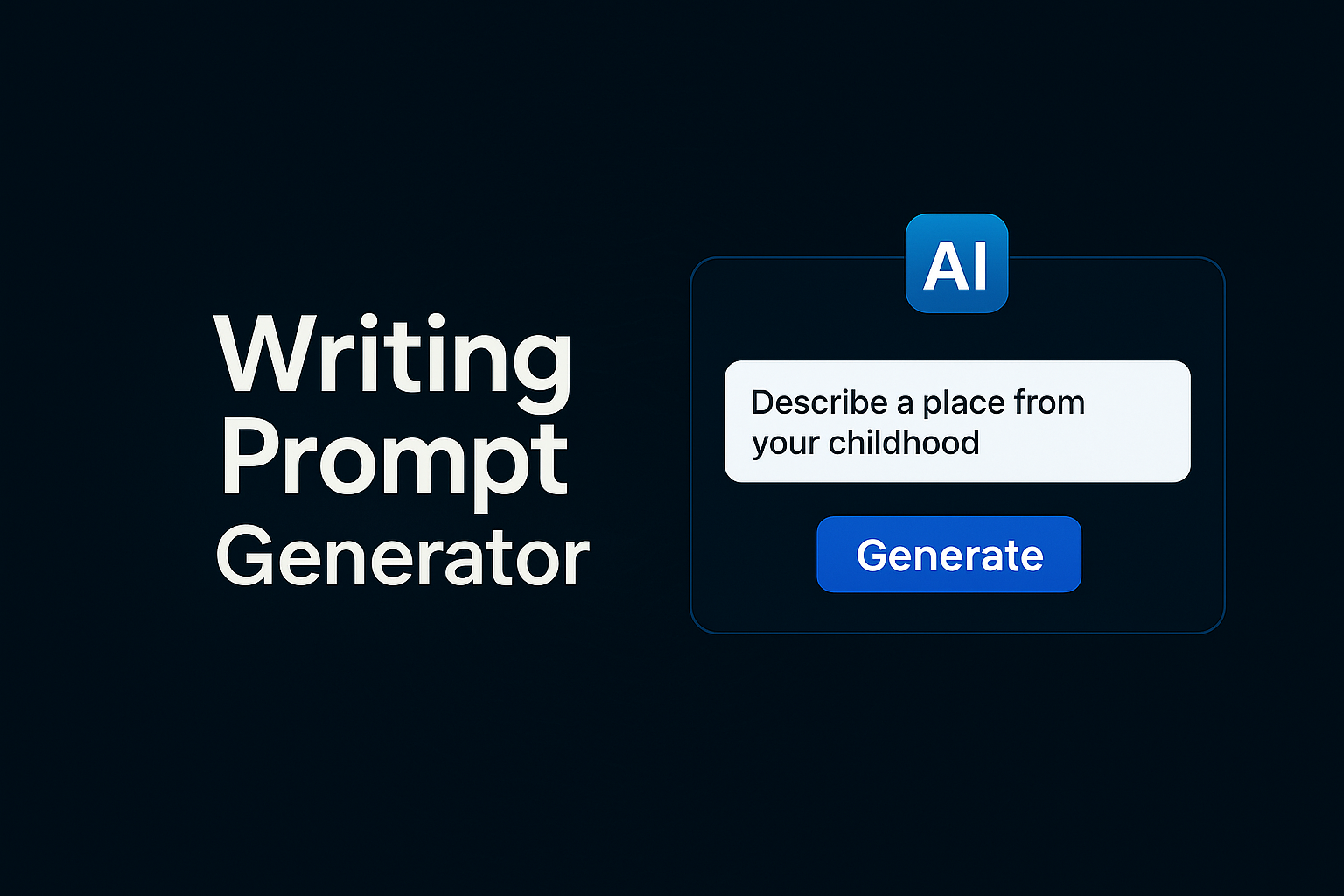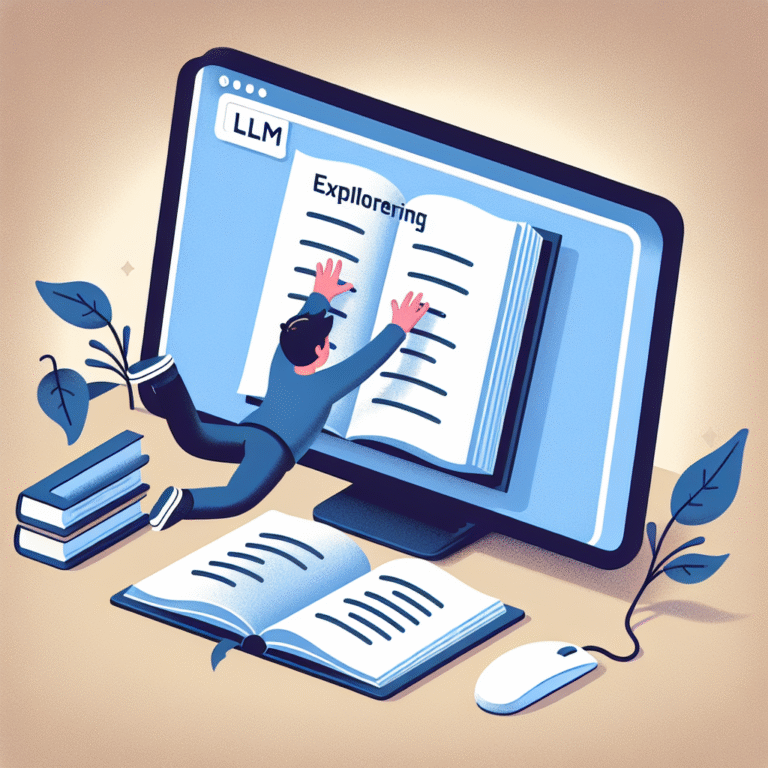Writing Prompt Generator: Unlock Endless Creative Possibilities with AI
Writing prompt generator tools have transformed the way writers spark their imagination. Whether you’re a novelist, blogger, teacher, or content creator, staring at a blank page is a universal frustration. With a writing prompt generator, you’re no longer at the mercy of writer’s block or creative fatigue. Instead, you gain instant access to fresh ideas, narrative hooks, and imaginative scenarios that can take your writing in bold new directions. According to a study published in the Journal of Creative Behavior (2021), structured creativity prompts significantly increase idea fluency and narrative originality among fiction writers. This highlights how tools like writing prompt generators are not just novelties—they’re evidence-based catalysts for ideation. In this guide, we’ll explore what a writing prompt generator is, how it works, why it matters, and how to choose the right one—especially in a world dominated by AI tools.

What Is a Writing Prompt Generator?
A writing prompt generator is a tool that delivers randomized or curated writing ideas to help you start a story, essay, journal entry, poem, or article. These tools may range from basic randomizers to intelligent systems that integrate natural language processing (NLP) to deliver thematically rich and emotionally evocative suggestions.
Traditional prompt generators often rely on predefined lists categorized by genre or theme. More advanced versions, especially those that utilize AI and machine learning, adjust based on user interaction, intent, and writing style. This evolution allows writers to receive nuanced prompts that stimulate creativity rather than rigidly dictate content.
The core idea is simple: provide a spark that eliminates the friction of beginning. A strong writing prompt can offer not only a plot suggestion but also a character conflict, setting, tone, or theme—all foundational to storytelling.
How AI Is Redefining Writing Prompt Generators
Writing prompt generators powered by artificial intelligence are a game changer. Unlike traditional lists or random shufflers, AI-based writing prompt generators understand tone, genre, and even emotional resonance. They can:
- Tailor prompts based on user preferences and writing history
- Analyze past writing samples to match voice or narrative style
- Provide multimodal inspiration, including visuals or sound elements
- Suggest detailed scenarios, emotional dynamics, or philosophical themes
For example, an AI writing prompt generator might give you: “A retired detective discovers a forgotten case file that connects to their estranged daughter’s disappearance.”
This isn’t just a scene—it’s a story kernel loaded with tension, character motivation, and plot potential. This level of sophistication is possible thanks to advancements in large language models (LLMs) such as GPT-4 and Claude. According to OpenAI, LLMs are capable of understanding patterns in narrative structures, emotional arcs, and genre tropes, which allows them to generate highly engaging and human-like prompts. As a result, writing prompt generators can now serve both as creative triggers and co-writers.
Why Use a Writing Prompt Generator?
Using a writing prompt generator isn’t cheating—it’s strategic creativity. It provides a fast, effective way to prime your imagination and build writing fluency. Here’s why these tools are essential:
- Beat Writer’s Block: Numerous cognitive studies (e.g., Kellogg, 2008) have shown that external stimuli, such as visual or verbal prompts, significantly aid in overcoming creative paralysis.
- Spark New Genres: Writers often stay within their comfort zones. Prompt generators can nudge you into new genres like historical fiction, speculative sci-fi, or experimental poetry.
- Improve Consistency: Daily prompt use develops a regular writing habit, which has been correlated with higher output and improved creativity (Sternberg, 2019).
- Boost Classroom Engagement: Teachers use writing prompts to assess grammar, logic, empathy, and imagination in students—often with better engagement than standard assignments.
- Inspire Content Creation: Digital marketers and bloggers can use these tools to generate fresh, SEO-friendly topics and thematic angles.
Best Features to Look for in a Writing Prompt Generator
Choosing the right writing prompt generator can greatly affect your creative experience. Here’s a breakdown of essential features and their benefits:
| Feature | Description |
|---|---|
| Genre Filters | Lets users specify genre preferences like fantasy, horror, or nonfiction |
| Prompt Type Options | Offers dialogue prompts, first lines, plot twists, and character bios |
| Tone Adjustment | Enables selection of mood: humorous, suspenseful, romantic, etc. |
| Adaptive Suggestions | AI learns from your input and improves future prompt relevance |
| Multimodal Inputs | Combines images or music with text prompts for enhanced inspiration |
The best writing prompt generator is one that adapts to your evolving needs. Some tools, like PrompterIQ, even include real-time tone analysis and smart filters for pacing, character development, or world-building depth.
Who Should Use a Writing Prompt Generator?
Writing prompt generators are not just for beginners—they serve a wide creative spectrum:
- Writers & Authors: Use them to break through ruts, warm up, or jumpstart new chapters.
- Teachers & Educators: Spark student engagement with creative and analytical writing assignments.
- Bloggers & Copywriters: Generate quick topic ideas, headline options, and theme clusters.
- Students: Practice for essay writing exams, reflection papers, or narrative assignments.
- Screenwriters & Game Designers: Design intricate scenes, quests, or dialogue sequences.
Moreover, many mental health professionals recommend writing prompts as therapeutic tools. Journaling with guided prompts can promote self-reflection, emotional regulation, and mindfulness (Pennebaker, 1997).
How to Make the Most of Your Writing Prompt Generator
Here are a few proven techniques to maximize the effectiveness of writing prompt generators:
- Set a Timer: Use the Pomodoro technique—write continuously for 25 minutes per prompt.
- Combine Prompts: Merge two contrasting prompts to create more complex narratives.
- Switch Perspectives: Write the same scene from the hero, villain, and neutral observer POV.
- Use as Subplots: Apply prompts to enrich secondary characters or parallel plotlines.
- Gamify It: Join writing challenge groups online that post daily or weekly prompt themes.
- Track Output: Log what prompts work best for your productivity and creativity.
The key is to not treat the generator as a crutch, but as a launching pad—then let your unique voice take
Top 5 AI Writing Prompt Generators in 2025 (So Far)
| Tool | Strengths | Pricing |
| PrompterIQ | Custom AI filters, genre presets, tone match | Freemium |
| Reedsy | Curated list of prompts by editors | Free |
| Plot Factory | World-building focused, good for novelists | Subscription |
| Squibler | Offers plot structure templates | Freemium |
| Rytr | AI content assistant with basic prompt feature | Freemium |
PrompterIQ stands out by offering not only writing prompts, but also adaptive learning that adjusts to your writing history and tone preferences, making it an excellent daily tool for serious creatives.
Conclusion: Embrace the Power of AI Writing Prompt Generators
Writing prompt generators are more than a convenience—they’re creative catalysts backed by science, psychology, and cutting-edge AI. In an age where content is king and creativity is currency, these tools help you stay consistent, versatile, and inspired.
Whether you’re writing your next novel, blog series, or just need a jumpstart for the day, a reliable writing prompt generator keeps your creativity sharp and your stories flowing.
Want to level up your writing workflow? Try PrompterIQ, the smart AI writing prompt generator that adapts to your goals, genre, and tone. No fluff. Just fresh, focused ideas. Start writing smarter—one prompt at a time.



